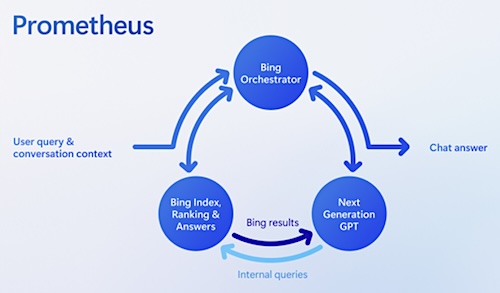 |
| Tejas Totade |
For content creators and communicators, the rise of generative AI-powered search engines signals a transition towards optimizing for direct answers that these search engines can provide. In the past 25 years, Google's search engine results page (SERP) has been the gateway to information, presenting a list of website links in response to our search queries. This familiar process of conducting searches is being transformed by generative AI, which is now embedded within search engines such as Bing, Perplexity, and Google's Search Generative Experience (SGE) to name a few.
This integration offers users a new and seamless alternative to sifting through numerous websites. Rather than navigating a list of links, individuals can interact directly with a sophisticated chatbot that delivers precise answers. This paradigm shift redefines the traditional goal of securing a spot on Google's coveted first page. Consequently, the number of “zero-click” searches is likely to increase as users find their queries resolved via the generative AI chatbot interface, like SGE's conversational interface that enables a dynamic, in-depth dialogue with the search engine itself!
 |
| Image credit: Microsoft Corporation |
While SGE is still being labeled as a Google Experiment that you need to opt-in on the Google Search Labs page, Microsoft has laid out how it integrated OpenAI’s GPT model with Bing’s backend using a proprietary technology called “Prometheus”—a state-of-the-art AI model that harnesses the extensive, up-to-date Bing index, its ranking mechanisms, and answer capabilities, alongside OpenAI's cutting-edge GPT model's creative reasoning. It utilizes the strengths of both Bing and GPT, crafting a series of internal inquiries via a module known as the Bing Orchestrator. This process is designed to deliver precise and detailed responses to user queries, all contextualized within the ongoing conversation, and achieves this remarkably quickly, in just milliseconds!
How will this affect SEO?
Does this mean that Search Engine Optimization (SEO)—the practice of increasing the quantity and quality of traffic to a website through organic search engine results—is dead?
Far from it!
How so? Well, while the user experience for serving the information may be changing, the underlying SEO fundamentals that determine the discoverability, indexing, and ranking of the content being served remain largely unchanged.
ChatGPT and other generative AI tools have enabled a new wave of content creation, making it possible to generate written materials, artwork, and even music like never before. This technological breakthrough can spark creativity, improve workflows, and make content production more available to a wider audience. However, this simplicity of content generation also brings its own difficulties, especially the increase of factually inaccurate, low-quality, or "junk," content that can fill up the digital space. And while Google does not categorically penalize all AI-generated content, it does have mechanisms in place to detect automatically generated low-quality and potentially inaccurate/spammy material.
Time for comms pros to shine!
Veteran communicators have an advantage, as fully AI-generated copy is likely to fall short of the content quality standards that search engines require to provide the information most relevant to a user's conversation with the search engine chatbot. Copywriters who show their Experience (and bring a unique perspective), Expertise (wide knowledge), Authority (deep knowledge), and Trust in their work will succeed. In fact, shortly after ChatGPT came out, Google changed their content quality rater guidelines to E-E-A-T from E-A-T! The extra "E" stands for experience, and Google asks whether the content, besides expertise, authority, and trust, also shows that it was created with some level of experience, such as using a product, visiting a place or describing what a person experienced?
BrightEdge, a top enterprise SEO platform, confirms this, as it notes in its “Ultimate Guide to Google SGE” that in the SGE landscape, it is important to create content that matches what users are looking for and gives them complete and relevant answers. Moreover, how users engage with content matters a lot. It's essential to create content that not only answers user questions but also encourages more engagement.
PR professionals will also play a very important role in helping their clients get more high-quality backlinks, which can boost their content's chances of appearing in Google SGE and Bing chat answers. Search engines use backlinks as one of the factors to measure the relevance and authority of a webpage. High-quality backlinks from reliable, related sites signal to search engines that your content is useful and credible, which can increase its likelihood of showing up in search chatbot answers. Core PR strategies such as improving brand awareness among relevant audiences including journalists and bloggers, effective content distribution, and relationship building will all be crucial as the competition for securing quality backlinks grows.
Search engines that use generative AI are transforming how search operates, and communicators and digital strategists will need to rethink their methods to fit these changing needs. However, despite what may appear like a radical shift, public relations and SEO professionals who embrace this new technology will continue to be essential and transformational in ensuring their clients can still get visibility and attention amid the content overload!
***
Tejas Totade is the Chief Technology Officer at Ruder Finn and spearheads rf.TechLab—the agency’s in-house emerging technologies, SEO, and analytics incubator.


 Thanks to advances in AI, social media has now taken a leading role in providing customer support services for brands, with adoption achieving noted fanfare among Gen Z consumers.
Thanks to advances in AI, social media has now taken a leading role in providing customer support services for brands, with adoption achieving noted fanfare among Gen Z consumers. Why universities must offer Communications Engineering degrees in the AI-driven world.
Why universities must offer Communications Engineering degrees in the AI-driven world. The Windy City is bullish on AI, according to a recent survey conducted by the Communications Leaders of Chicago in conjunction with DePaul University’s College of Communication.
The Windy City is bullish on AI, according to a recent survey conducted by the Communications Leaders of Chicago in conjunction with DePaul University’s College of Communication. The emergence of generative artificial intelligence (Gen AI) technology is a curveball that has the potential to significantly disrupt and erode voter trust in the media and governmental leadership.
The emergence of generative artificial intelligence (Gen AI) technology is a curveball that has the potential to significantly disrupt and erode voter trust in the media and governmental leadership. The AI revolution in retail is just starting in 2024. This technology is evolving rapidly, and those who embrace it will thrive in the coming years.
The AI revolution in retail is just starting in 2024. This technology is evolving rapidly, and those who embrace it will thrive in the coming years.


 Have a comment? Send it to
Have a comment? Send it to 
No comments have been submitted for this story yet.